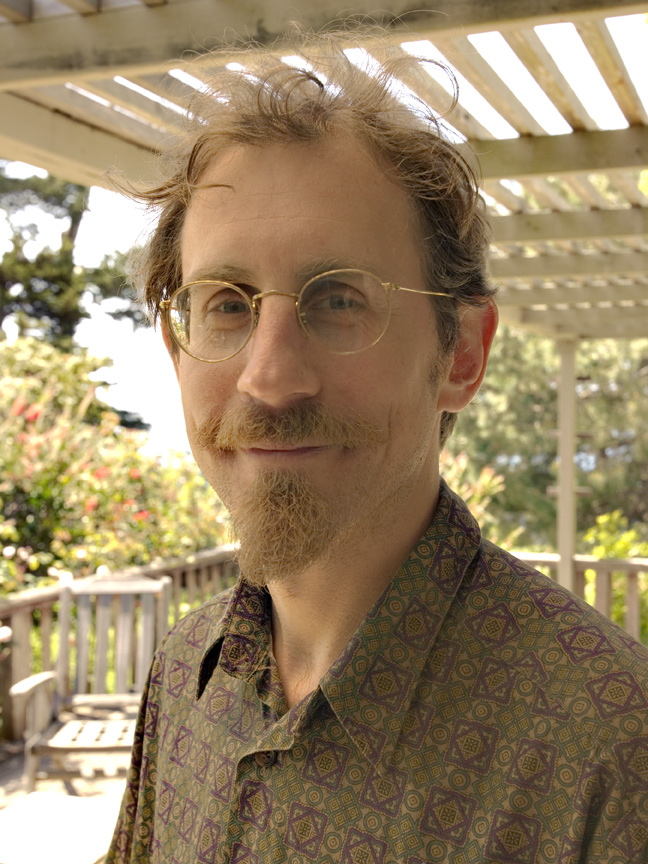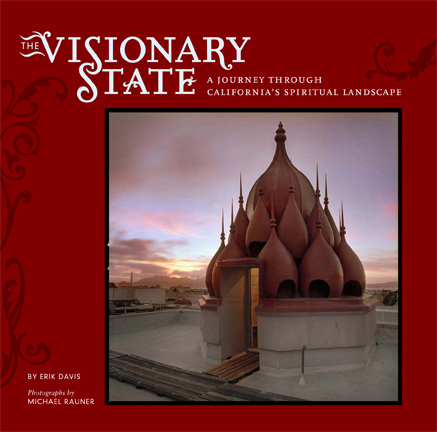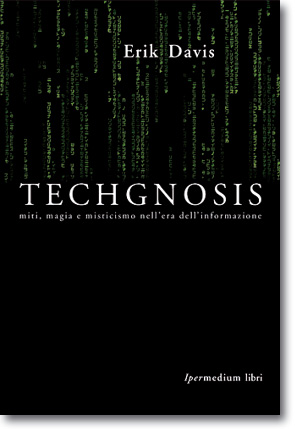 | |
| A colloquio con lo sciamano Erik Davis
| |
| di Adolfo Fattori | |
|
Erik Davis has
completed his scholarly work for doctorate with a thesis on Philip K. Dick.
His Essays appeared in Wired, Gnosis, Rolling Stones Magazines. Letīs start with a preliminary question: we Europeans perceive the words sacred and secolarization in a slightly different way from you Americans. Could you specify what are the most significant differences from your point of view? There is an idea floating around that secularization is an inevitable aspect of modernization. This idea has become so well-established in part because it is so true of Europe, which over a handful of centuries went from a theocratic medieval mode to a profoundly secular society.
This is
simply not true in America, and not just in the "red states" where the
conservative Christians live. The progressive, novelty-seeking, inventive
side of American culture has always been tied up with religious and
spiritual forces, sublimated or otherwise. I live
The
territory became a state in the middle of the nineteenth century, was
unusually diverse and multicultural, was always marked by technological
innovation, and was industrialized more quickly than most of the United
States. So you would think it would be super-secular. But I suspect that Europeans have a more subtle, careful, and historically informed sense of where the sacred is. But that clarity is accompanied by a suspicion that the thing itself is gone, that the sacred is simply a ruin of culture or consciousness. In America, there is still the sense that the sacred is accessible-perhaps as another extension of consumerism. But it also has to do with the land, with the fact that, in contrast to Europe, there are still so many wild and open spaces here, at least relatively. So the role of the sacred in America can be more coarse and naïve but also, perhaps, more energized and alive.
I agree
that the sacred survives today, but it does so in a modern way, which has
perhaps utterly transformed it. In previous eras, the sacred existed
outside our individual experience, but I am not so sure about that
anymore, except in a strictly anthropological sense. The So the reassuring and bountiful and life-giving aspect of the sacred can be found in many places-in music, in mountains and rivers, in celebrations, in stillness, in holy places, in the play of love. Another route is through terror, or confusion, or the abject, the uncanny. In my own life I can sometimes see that on the worst days, I am still somehow closer to ultimate sources-which doesnīt make things any easier!
Because
both of these routes to the sacred--the light and the dark--have power
over people, they have also been tapped and commodified in various
ways--perhaps "technologized" is an even better word. So our sacred often
seems to lie in the vicinity of kitsch, of cheap tricks, of
Well
the connections between fantasy and magic are pretty obvious: the fantasy
genre emerges from the Gothic, and the Gothic is a romantic and haunted
reaction to the progressive liberal spirit and rationalism of the
Enlightenment. As such the Gothic attempted to reconnect, through images
and stories and torrid emotions, with older forces, with the irrational,
and the supernatural, and the explosively poetry of the uncanny. If you
have an eye for continuity, as I do, then you can see the genreīs
recycling of magic and the supernatural as an expression of
SF is a
more complex case--though it also grew from the Gothic, it often possesses
a hard-edged secular edge that has no interest in magic or the
supernatural. But even in that case, the fantastic possibilities
themselves often seem to invoke older strata of the imagination-as when
the cyberspace in William Gibsonīs Neuromancer trilogy fragments into the
loa of Vodun, or Neil Stephensonīs information virus in Snowcrash derives
from the earliest formations of religion as a memeplex. If you look at SF
films, its also clear that special effects themselves are an extension of
"magical technology." Throughout the modern world, when
Look, itīs pretty clear that the human world is now radically redefining the divide between matter and the incorporeal. We are more aware than ever before that the natural world that we are embedded in is reaching the edge of its hard-wired limitations, and the constraints of matter represented by global warming or mass extinction or the finite supplies of water has the whole world in an anaconda squeeze of materiality.
At the
same time, our supposedly "materialistic" civilization is dematerializing
before our eyes, as money goes virtual, online gaming worlds explode,
physical location dissolves into data points, the CD gives way to the MP3,
and everything falls into the screen. It doesnīt matter that we are still
dependent on electrons and power grids-the experience of culture,
consciousness, and communication is increasingly
Absolutely. In some ways, the figure of the shaman is particularly accessible to the postmodern mindframe, even if-as we need to remember-this "shaman" is as much a figment of the Westīs anthropological imaginations as a real historical actor authentically tied to the old ways. Castaneda, of course, was making it up-at least on one level. So why does shamanism resonate with us? Partly because it does not operate in a moral world. It operates in a world of power, and moreover in a world that is not organized along traditional hierarchical dualisms about good and bad, light and dark. Itīs a jungle on the other side, a multiverse of spirits and realms. Itīs a networked, deal-making kind of place. Moreover this realm can be accessed through our own experience, though mind devices like plants or trance drumming.
A
hallmark of modernity is the central role played by this sort of direct
experience, and this emphasis on experience carries on into the postmodern
by way of the emphasis on affect, on haptics, on sensation, only now freed
from a coherent subject who experiences. But that is * Traduzione dell'introduzione dall'italiano all'inglese a cura di Gabriella Sedda | |
 Today
it is very rare to meet a professional European, let alone an intellectual
or artistic sophisticate, who is religious or even particularly
"spiritual." Even if you look at a successful German artist like Anselm
Keifer, whose work deals with explicitly religious, esoteric, and mystical
themes drawn from deep European sources, and you will discover these
interests existing side by side with a very disenchanted view based on
science and an existential sense of our senseless thrown-ness in the
world.
Today
it is very rare to meet a professional European, let alone an intellectual
or artistic sophisticate, who is religious or even particularly
"spiritual." Even if you look at a successful German artist like Anselm
Keifer, whose work deals with explicitly religious, esoteric, and mystical
themes drawn from deep European sources, and you will discover these
interests existing side by side with a very disenchanted view based on
science and an existential sense of our senseless thrown-ness in the
world. supernatural. If you agree with this, what is,
in your opinion, the reason for that?
supernatural. If you agree with this, what is,
in your opinion, the reason for that? disembodied and
malleable. To my mind this means that older ways of understanding the
relationship of mind and body perhaps have something to tell us, not in an
ontological or scientific sense necessarily, but in an epistemological or
practical sense: we are entering new worlds of mind, and who is to say
that Kabbalah or Zen Jedi mind tricks are not useful metaphors and maps in
this new world. And if the Transhumanists are right, and we are somehow
able to shape and condition the new
disembodied and
malleable. To my mind this means that older ways of understanding the
relationship of mind and body perhaps have something to tell us, not in an
ontological or scientific sense necessarily, but in an epistemological or
practical sense: we are entering new worlds of mind, and who is to say
that Kabbalah or Zen Jedi mind tricks are not useful metaphors and maps in
this new world. And if the Transhumanists are right, and we are somehow
able to shape and condition the new